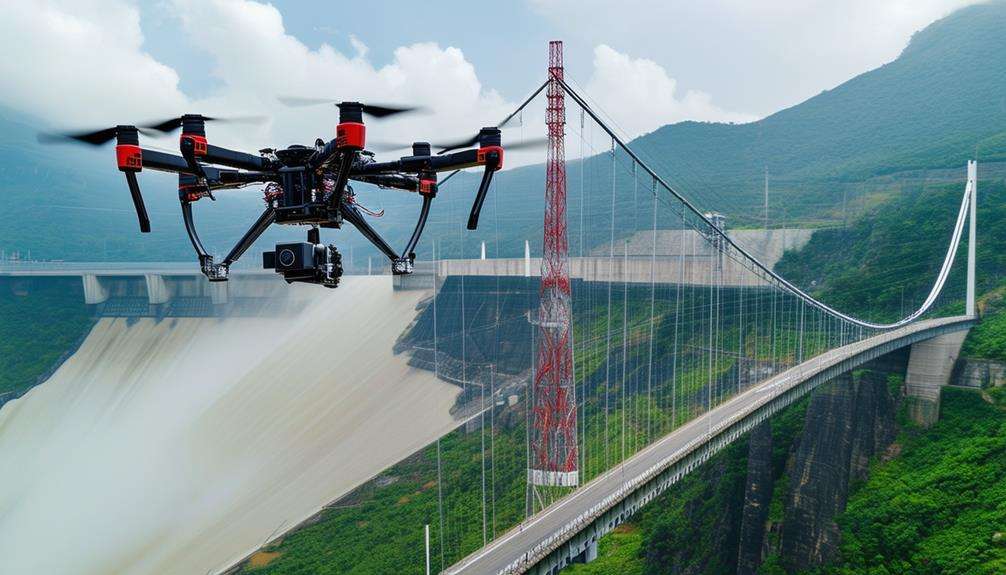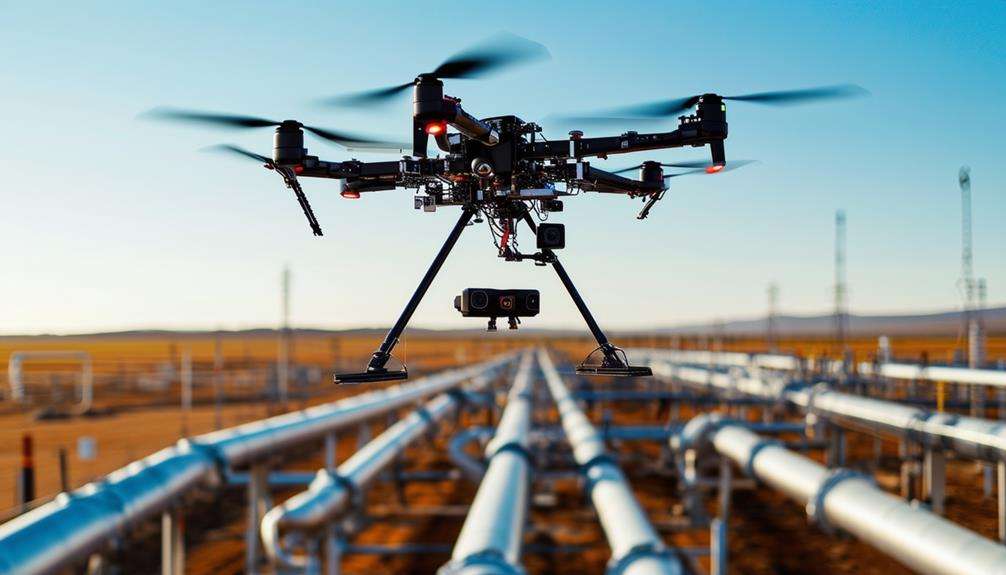The Benefits of Using Drones for Inspection Services
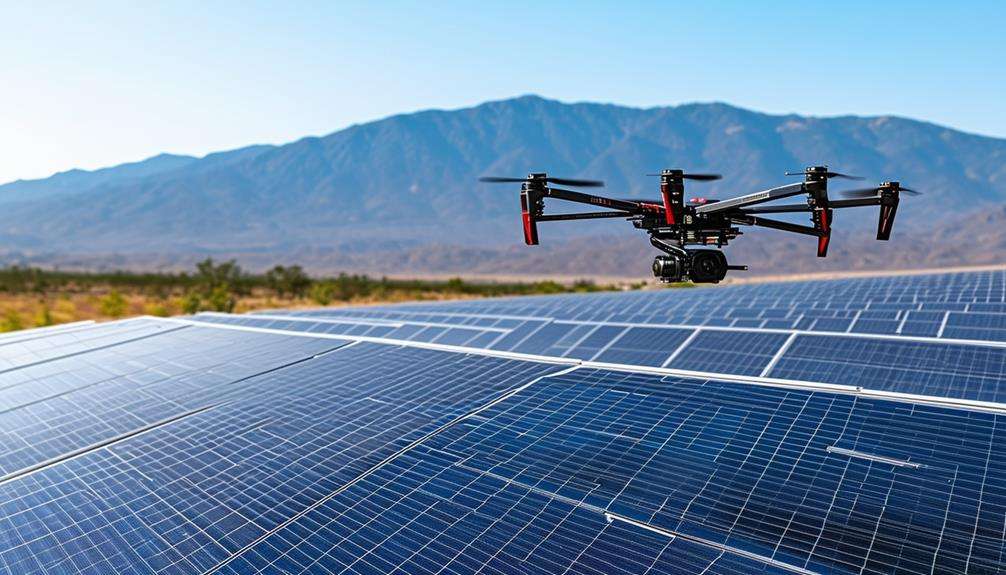
Imagine conducting thorough inspections without the need for extensive scaffolding or risking worker safety. Drones offer a quick deployment solution, capturing high-resolution visuals and covering large areas efficiently. This technology not only reduces downtime but also significantly cuts costs.
Drones can access hard-to-reach structures and identify safety hazards, making them invaluable for property and infrastructure assessments. Interested in how drones are revolutionizing the inspection industry?
Quick Deployment
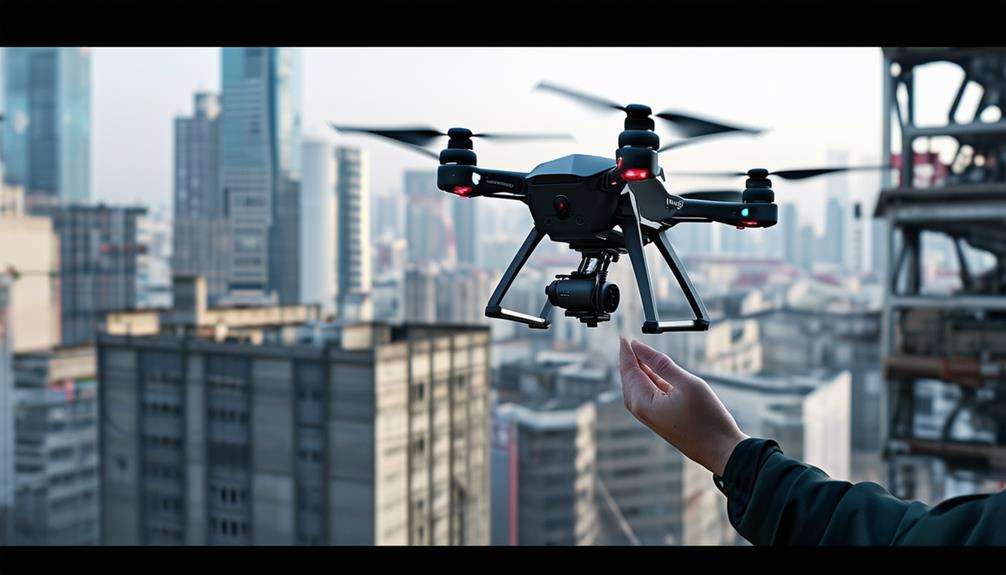
Drones can be deployed instantly, enabling rapid evaluations in urgent situations. In critical scenarios, time is of the essence, and extensive setups are impractical. A drone can be airborne within minutes, providing a quick deployment that ensures prompt situation assessment. This capability is particularly crucial in emergencies where every second counts.
Utilizing drones offers the advantage of efficient evaluation, significantly reducing the time required compared to traditional methods. For instance, in property inspections, instead of waiting for scaffolding to be set up or ladders to be positioned, a drone equipped with high-resolution cameras can swiftly capture detailed images from multiple angles. This efficient approach allows for the rapid identification of issues, facilitating quicker decision-making.
In urgent situations, the ability to deploy a drone instantly can be transformative. High-resolution cameras deliver clear, precise visuals, enabling an immediate understanding of the problem's scope. Whether it's inspecting a damaged roof after a storm or assessing an industrial site requiring immediate attention, drones provide a swift, efficient, and highly effective solution for real-time evaluations.
Thorough Assessment
Drones ensure a comprehensive evaluation with high-resolution visuals, capturing clear images from multiple angles. They easily access hard-to-reach areas, providing extensive data that traditional methods might miss. This allows for precise information to support well-informed decisions without endangering anyone.
High-Resolution Visuals
Thanks to high-resolution cameras, you can capture detailed images from various angles, ensuring a comprehensive assessment of properties. High-resolution visuals allow you to examine every nook and cranny, making it easier to identify potential issues. The advanced sensors on drones provide live footage, aiding in the accurate detection of existing and potential problems during inspections. This technology ensures that no critical detail goes unnoticed.
By leveraging these detailed images, you can compile precise inspection reports that give a thorough overview of the property's condition. These reports help diagnose current issues and forecast potential future problems. Accurate detection and detailed reporting lead to informed decision-making, allowing you to take proactive measures before minor issues escalate into major concerns.
Clear visuals obtained by drones help identify hotspots and reveal hidden problems without putting inspectors at risk. You get an in-depth visual inspection, offering a detailed analysis of properties while maintaining a safe environment for everyone involved. The high-resolution visuals provided by drones ensure that every inspection is thorough, reliable, and efficient, setting a new standard in property assessment.
Hard-to-Reach Areas
With their ability to effortlessly access hard-to-reach areas such as rooftops, chimneys, and high ceilings, drones ensure a thorough inspection of even the most inaccessible spaces. They excel in roof inspection, providing detailed insights into potential issues often missed during traditional assessments. These areas can be dangerous and time-consuming to inspect manually, but drones mitigate these concerns by maneuvering with ease.
Equipped with advanced sensors and high-quality cameras, drones capture detailed images and videos from challenging angles. This capability ensures that no part of your industrial assets is overlooked, providing an assessment that manual methods can't match. Whether dealing with confined spaces or elevated structures, drones make the inspection process safer and more efficient.
Comprehensive Data Collection
Drones offer comprehensive data collection for inspections, ensuring meticulous assessment from every angle with high-resolution cameras and advanced sensors. These drones capture clear images and live footage, facilitating the accurate detection of existing and potential issues. This results in a detailed examination of the property without missing crucial details.
The inspection reports generated from drone data collection enable informed decision-making. Equipped with advanced sensors, drones can identify hotspots and uncover issues invisible to the naked eye. This technological advantage ensures that no critical areas are overlooked during assessments.
Additionally, drones provide access to high-risk areas, allowing for detailed inspections without compromising safety. You can collect precise and reliable data even from challenging spots. The thorough nature of drone inspections ensures that the information gathered is extensive and actionable, leading to better outcomes.
Improved Safety
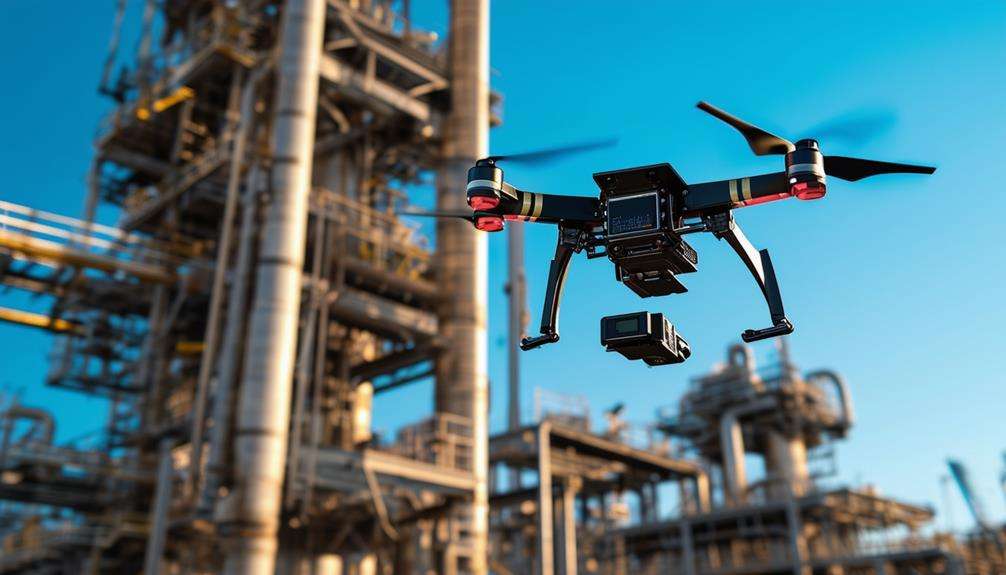
Using drones for inspection services eliminates the need for inspectors to enter hazardous areas, significantly reducing the risk of accidents and injuries. Drones can effortlessly access confined spaces and high-risk environments, ensuring the safety of your team. With advanced thermal imaging capabilities, drones can detect potential dangers such as hotspots without exposing inspectors to peril.
Reduced Human Risk
Utilizing drones for inspections significantly decreases the risk of injury by keeping human inspectors out of dangerous or hard-to-reach areas. Drones minimize inspectors' exposure to potentially harmful conditions, resulting in fewer accidents and a safer working environment for everyone involved.
Drones can navigate hazardous environments and identify potential safety hazards without endangering human lives. By remotely operating drones, inspectors can assess risky areas and gather detailed visual data crucial for enhancing safety measures. This not only improves the inspection process but also ensures thorough examinations of high-risk locations without jeopardizing safety.
Here's a quick comparison to highlight the advantages:
| Traditional Inspections | Drone Inspections |
|---|---|
| High human risk | Reduced human risk |
| Limited access to dangerous areas | Full access to dangerous areas |
| Physical strain on inspectors | Remote operation |
| Higher accident rates | Lower accident rates |
| Time-consuming process | Efficient and quick |
Access Hazardous Areas
By leveraging drone technology, inspectors can safely access hazardous areas like high rooftops or confined spaces without risking human safety. The use of drones eliminates the need for inspectors to physically navigate dangerous environments, significantly reducing the risk of accidents and injuries.
For example, drones can inspect chemical storage facilities or unstable structures without requiring personnel to set foot in these risky areas. This capability enhances safety protocols by keeping humans out of harm's way.
Drones offer real-time monitoring, allowing for the prompt identification of safety hazards and the implementation of preventive measures before issues escalate. This proactive approach effectively manages potential risks, minimizing the likelihood of accidents. By accessing hazardous areas remotely, drones contribute to maintaining a safer working environment for your team.
Additionally, deploying drones for inspections enables the implementation of more robust safety measures. Analyzing the data collected by drones allows for continuous improvement of safety protocols. Using drones for inspections not only reduces human exposure to risky environments but also enhances overall safety standards for your inspection processes.
Reduced Downtime
Drone inspections significantly enhance operational efficiency by enabling assessments without interrupting daily activities. Unlike traditional methods, which often require halting operations or vacating commercial properties—resulting in costly and time-consuming disruptions—drones offer a seamless solution that maintains business continuity.
With drone technology, effective inspections can be conducted swiftly and accurately, minimizing the need for extensive preparation or shutdowns. Drones can assess the condition of structures, equipment, and other assets in real-time, allowing potential issues to be identified and addressed promptly. This approach not only reduces downtime but also optimizes operational efficiency.
Moreover, drone inspections are highly cost-effective. By eliminating the necessity to pause daily activities or deploy specialized equipment that requires significant downtime, businesses save both time and money. This is particularly advantageous for commercial properties, where continuous operation is crucial.
Lower Costs
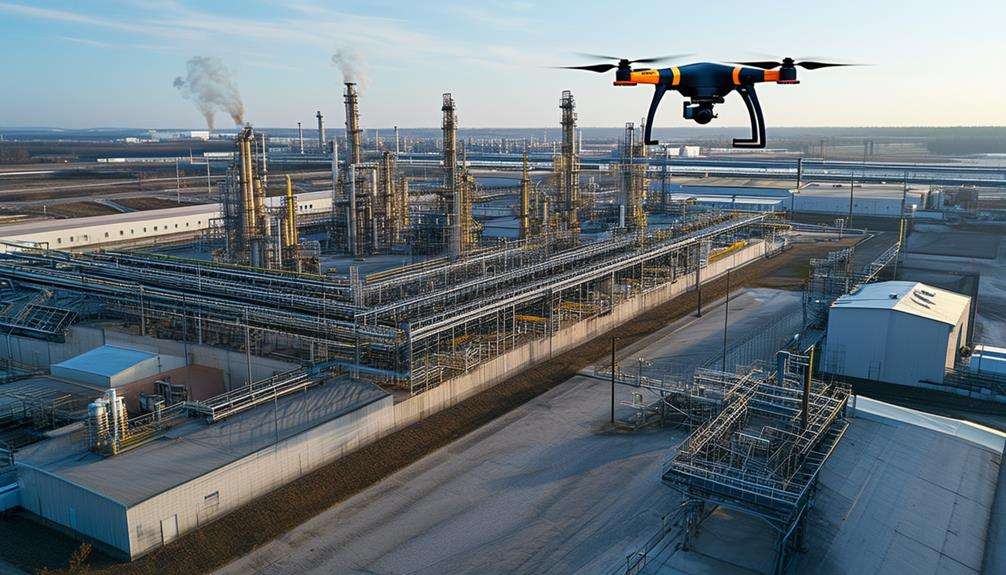
Using drones for inspections can significantly lower your costs. By reducing labor expenses and minimizing the need for specialized equipment, drones offer a more affordable solution. This efficient approach not only saves money but also delivers reliable results.
Reduced Labor Expenses
Utilizing drone technology for inspections significantly reduces labor costs by minimizing the need for extensive on-site personnel. Inspection drones can perform thorough inspections with a smaller workforce, leading to immediate cost savings and making drone inspection services a financially sound choice.
Drones streamline the inspection process, enabling fewer employees to handle tasks that previously required many. This efficiency allows companies to allocate resources more effectively, focusing on other critical operational areas. By relying on drone inspections, businesses not only cut labor costs but also optimize their workforce, ensuring smoother operations.
The cost savings from reduced human resource requirements can be substantial. Instead of deploying numerous employees to inspect various sites, a few drones can accomplish the task more quickly and accurately. These lower labor expenses enable businesses to reinvest savings into other areas, fostering growth and innovation. In essence, drone inspection services offer a cost-effective solution that reduces both labor expenses and operational complexities, making them a valuable asset for modern businesses.
Minimized Equipment Costs
Leveraging cutting-edge technology, such as drones, can significantly reduce equipment expenses by replacing costly, specialized tools traditionally used for inspections. Traditional inspection methods often require expensive equipment that incurs high purchase, maintenance, and operational costs. In contrast, drones offer a more cost-effective alternative, enabling thorough inspections without the hefty price tag.
Opting for drone inspections substantially lowers your equipment costs. Drones are generally less expensive than the specialized tools used in traditional methods, and their maintenance and operating expenses are notably lower. This translates to significant savings, making budget management more manageable for your business.
Additionally, drones streamline the inspection process, reducing the need for extensive human resources. This efficiency lowers overall costs, making inspections more affordable and accessible. Businesses and property owners alike stand to benefit financially from this modern approach to inspections.
High-Quality Data
Capturing high-resolution aerial footage with drones provides detailed views essential for comprehensive inspection analysis. The data collected enables informed decision-making and rapid issue identification. This high-quality data is crucial for asset management and predictive maintenance, allowing you to address potential problems before they escalate.
Drones offer several advantages in acquiring high-quality data:
- Detailed Views: High-resolution images and videos reveal even the smallest details, facilitating the detection and diagnosis of issues.
- Consistent Record-Keeping: The comprehensive data is accessible at all times, enhancing record-keeping and improving decision-making processes.
- Improved Predictive Maintenance: Accurate data supports the implementation of predictive maintenance strategies, reducing downtime and extending asset lifespan.
Aerial footage captured by drones revolutionizes inspection services. It provides a clear, detailed, and accessible record of your assets, enabling more effective management and better decision-making. By leveraging this high-quality data, you can optimize inspection processes, stay ahead of potential issues, and ultimately save time and resources.
Larger Data Collection
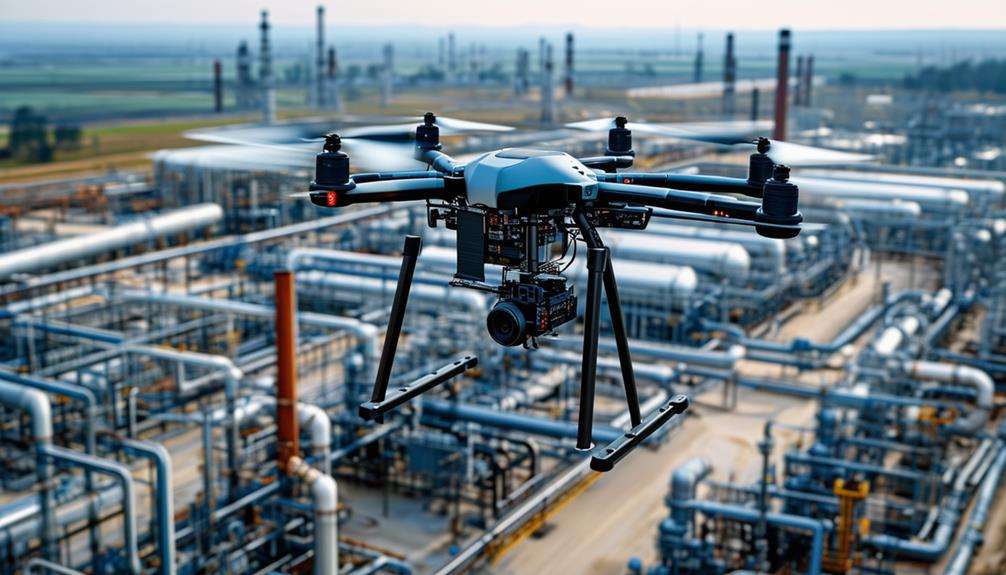
Drones rapidly collect vast amounts of high-resolution data, providing detailed insights into various properties. By deploying drones for inspection, you leverage advanced sensors and cameras to capture precise images and videos, enhancing the quality and depth of data collection and offering a thorough understanding of the inspected areas.
The data gathered by drones goes beyond standard images; it includes 3D mapping, thermal imaging, and live streaming capabilities. These features enable real-time assessments and quicker, informed decision-making. With these tools, potential issues can be identified and addressed before they escalate, saving both time and resources.
Drones are a cost-effective solution for extensive data collection. They minimize the need for manual labor and multiple inspections, thereby increasing efficiency. By covering large areas swiftly, drones streamline data collection, allowing you to focus more on analysis and decision-making rather than the data-gathering process.
Integrating drones into your inspection services not only provides high-resolution and detailed insights but also enhances the entire process. Drones prove to be indispensable tools for improving the efficiency and effectiveness of inspection operations.
Wider Area Coverage
Drones can efficiently cover large areas, enabling comprehensive inspections of expansive properties. Their aerial perspective provides a thorough view of the site, revealing details that might be missed from the ground.
Advantages of using drones for inspection services include:
- Improved Efficiency: Drones can survey vast areas much faster than multiple inspectors on foot, leading to quicker data collection and faster turnaround times.
- Detailed Aerial Assessments: Elevated vantage points allow drones to capture high-resolution images and videos, offering a detailed and comprehensive view of the inspected area.
- Resource Optimization: Drones reduce the need for multiple inspectors. A single drone can perform the work of several people, resulting in cost savings and more efficient resource allocation.
Utilizing drones in your inspection process ensures comprehensive coverage. They can navigate various sections seamlessly, ensuring a complete and efficient inspection. This technology not only improves area coverage but also enhances the overall effectiveness of your inspection services.
Hard to Reach Structures
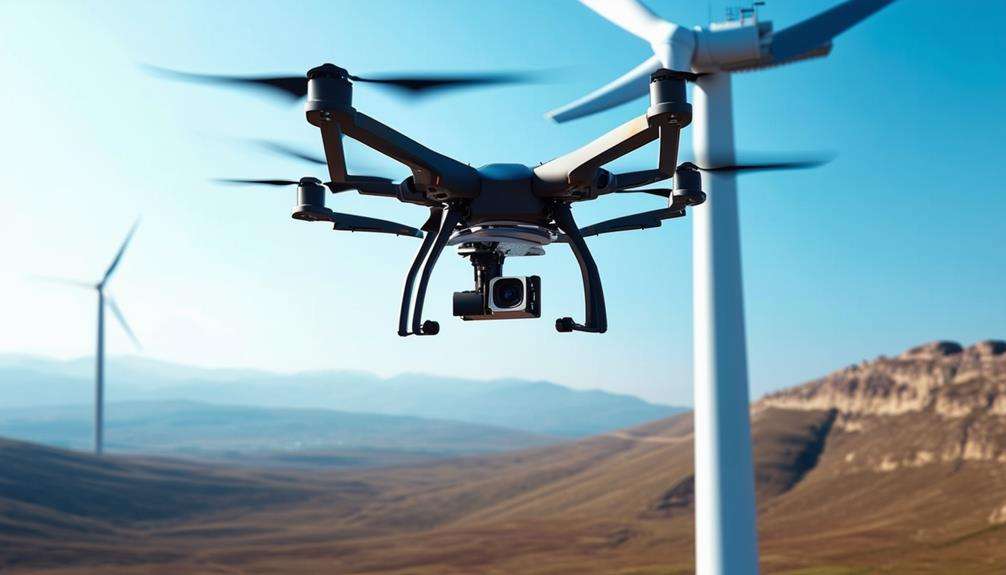
Drone technology significantly enhances the safety and efficiency of inspecting hard-to-reach structures such as rooftops, towers, and bridges. By using drones, the need to put human inspectors at risk is eliminated, as these devices can access elevated or awkward locations to capture detailed visual data and provide a comprehensive view of the structure's condition.
Equipped with thermal imaging, drones can detect issues invisible to the naked eye, such as heat leaks, electrical faults, or moisture intrusion. This capability allows for the early identification of potential hazards before they develop into costly problems. In industrial settings, drones can also navigate confined spaces that would be hazardous or impractical for human entry, ensuring thorough inspections without leaving any area unchecked.
Minimal Disturbance
Using drones for inspections causes minimal disturbance to both property and its occupants. Unlike traditional methods involving scaffolding, ladders, or temporary relocation, drones provide a non-intrusive way to assess conditions. This makes inspections not only more efficient but also less disruptive to daily activities.
Drones can access hard-to-reach areas without disrupting the environment. Whether inspecting rooftops, tall structures, or confined spaces, drones operate swiftly and efficiently, eliminating the need for workers on-site for extended periods. This means your daily routine continues uninterrupted, with little to no impact on your living or working conditions.
Here's why drones excel at causing minimal disturbance:
- Non-Intrusive Approach: Drones operate quietly and without physical disruption, making the inspection process seamless.
- Efficient Operations: They conduct inspections quickly, reducing overall time and ensuring minimal inconvenience.
- Access to Hard-to-Reach Areas: Drones can navigate areas that are difficult or dangerous for humans to reach, all without altering your environment.
Conclusion
Using drones for inspection services provides numerous advantages, including rapid deployment and comprehensive assessments that enhance safety. Drones minimize downtime, reduce costs, and efficiently collect extensive data, covering larger areas and accessing difficult-to-reach structures.
This technology causes minimal disruption to ongoing operations, transforming the inspection process. By adopting drone technology, you can achieve significant improvements in speed, safety, and cost-effectiveness for all your inspection requirements.


